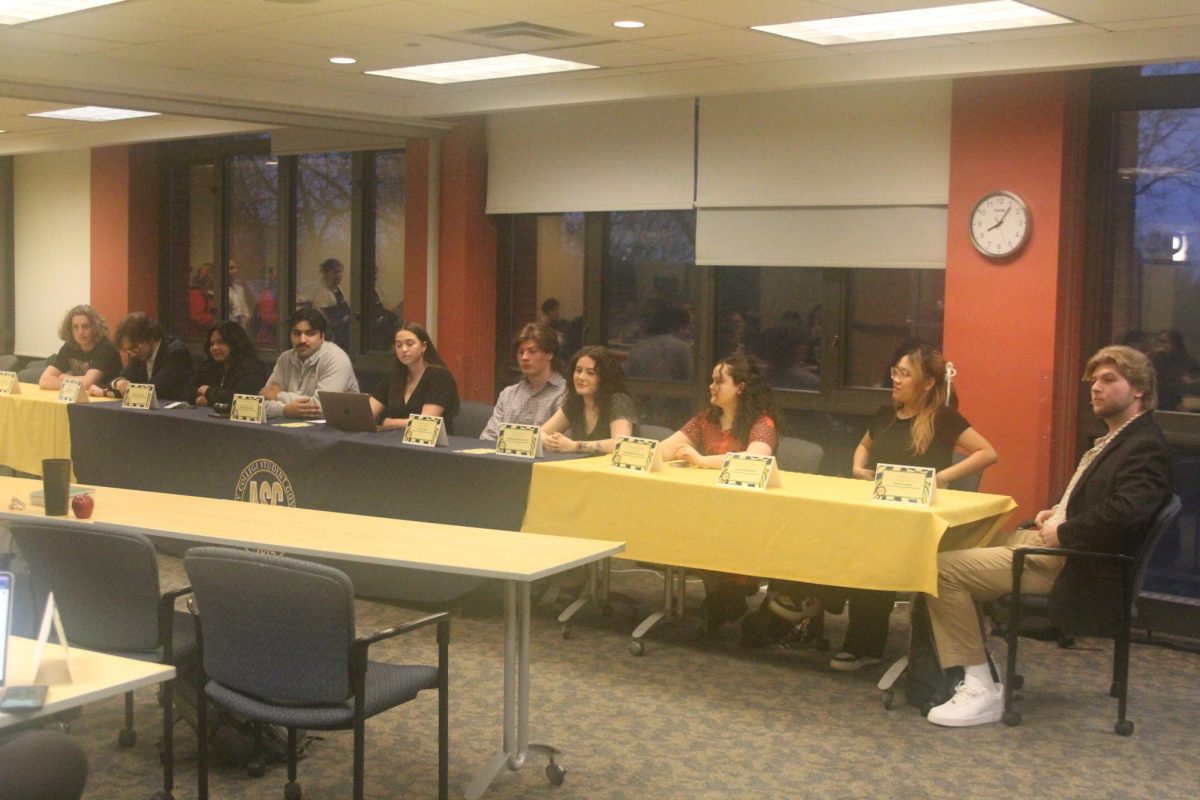By SAM HUNGERFORD
Guest Writer
The Campus is featuring several pieces from Sam Hungerford’s Senior Comprehensive Project.
Last November, Leslie Jensen, music teacher at Second District Elementary School, began to worry about how much her students were eating. As a presenter-in-training for the Upside Down Organization, a professional development company focused on education through neuroscience, Jensen was becoming increasingly aware of the impact nutrition has on developing brains. Second District provides free and reduced lunches and breakfasts for children, but the quality – and quantity – of food her students get to eat at home after school and on the weekends is out of the school’s control.
That was when she heard that the school nurse, Sue Mulby, treated two children for second degree burns who were trying to cook for themselves this year. The first, a 5-year-old girl, burned her hand on an electric range. The second, a third grade boy, had burns across his stomach from trying to cook bacon on a gas stove. Mulby had never had to treat such severe burns before.
Simultaneously, Jensen, who is also a board member of Meadville’s Center for Family Services, and Mulby decided that something had to be done to make sure kids were getting the nutrition their growing bodies and brains needed when they were off the school’s grounds.
“The stars and the moon aligned,” Jensen said, and the idea for a backpack program, which would send kids home with food for the weekend, was born. Now the operation is nearly up and running, spearheaded by Jensen, Mulby and school Guidance Counselor Karen Vanco. The group just received its tax ID number, meaning it can begin accepting donations, and Jensen hopes it will be operational by the end of the year.
The link between proper nutrition and brain development continues to solidify through studies being conducted on many fronts. In 2011, the U.S. Department of Agriculture released a 40-page list of studies titled “Role of Nutrition in Learning and Behavior: A Resource List for Professionals,” linking diet and exercise to academic achievement and behavioral growth. Among them are studies finding that food insecurity and hunger in early life can have severe impacts on a child’s growth, health and cognitive ability. Others found correlations between obesity in low-income groups with lowered test scores in math – scores that improved as dietary intervention programs were put in place. Another suggested that a poor diet high in fat, sugar and processed food content can cause small decreases in IQ scores by the time a child is eight years old. The children most affected by the ramifications of poor diet are those whose families fall below the poverty line.
“There’s so much that happens in that socioeconomic group that impacts what they need to be doing [in school]. And I think that unless we’re sitting down and talking about it and having those things presented, I don’t think we even realize it on a day to day basis that this is how this is going to play out in that little one’s life,” Vanco said. “There’s so much research now on how poverty impacts the brain because they’re not getting proper rest a lot of the time, they’re not getting proper diet all of the time, and now there’s even more that compounds with how diet affects our physical health in addition to our brain health. All of the things that you read about if you’re reading the research, you see that going on with their behavior and academic performance in school.”
According to Second District Principal Kurt Meader, the number of students affected by poverty in the area is continuing to rise.
“This community has declined economically in the 15 years I’ve been in this area. Unfortunately I don’t know if it’s hit the bottom yet,” Meader said. “I’d like to be optimistic to think that it can’t be any worse than this and that we’ll have industry move in and create jobs and things like that, but it’s not really happening. I found a document in this school from the principal then in 1980. Only 42 percent of the students were on free and reduced lunch, and now we’re at 78 percent, so it’s almost doubled in the poverty rate since 1980.”
Meader stated that, while Meadville is not an extreme case when compared to larger cities, common characteristics among the students can be seen with other impoverished areas. He also noted that a large portion of Meadville’s low-income population is working poor, meaning that children’s parents or guardians are employed, but don’t make enough to fall above the poverty line.
Rising poverty levels in the area also means increasing numbers of children exposed to potentially traumatic situations early in childhood. Frequent moving, food insecurity or lack of a singular primary caregiver, for instance, can cause chronic stress in young children. If not addressed, chronic stress syndrome can manifest as anything from behavioral outbursts in class to impaired short term memory.
In order to identify and aid struggling students, Second District recently implemented a new technique they are calling “intervention groups” to identify and get help for learning support and emotional support students. At the beginning of the year, all students are grouped into three sections: the benchmark group, which focuses on maintaining the children’s level of achievement, the strategic group, and the intervention group. The strategic and intervention groups receive further assessment and more specialized attention within their groups. Vanco said that the method has proven highly effective.
“It’s increased the number of minutes that the kids are getting in a small group type of setting,” she said. “Because when we’re setting up the intervention in groups of no more than five kids they can rotate, you know, once they’ve got it you’re moving them to the next level that they need to go to.”
Another school-wide initiative is the significant decrease in homework being assigned, coupled with the fact that homework no longer counts for a letter grade at Second District. In part, this change has to do with the 40 minute extension of the school day, making it unrealistic to assign a large volume of homework. But it also benefits students who might not have a parent at home helping their child with homework, or reminding them to do it.
French Professor Laura Reeck, whose son attends Second District, noted that this change also benefits kids who have parents that are very invested in education.
“We were faulty with Simon this year, his teacher was sending home a reading program called Book-It, so he has a calendar and he’s asked to read for 10 minutes every single day to an adult,” Reeck said. “So for the first two months we never did it! It was like, we’re too busy, we don’t know what this is, it’s just a piece of paper – and that’s in a family where education is definitely valued. And it’s just the craziness of life.”
Meader said that the reduction in homework amounts was a conscious decision, and that it thus far seems to be helping kids.
Other issues are often easier to identify than mental health problems, though they are just as difficult to address, such as children being sent to school sick or being consistently dropped off late.
“The other day a parent called me after she dropped off her little ones here and was driving down the street and called from her car to say there’s a little guy on the street right now that has no coat and no gloves and they’re walking to school,” Vanco said. “Those are obvious things. But then, they’re tired, they’re falling asleep in class, sometimes it’s because the parent is working and the kids are getting up at midnight in a daycare, going home and going to bed, and then three, four hours later they’re getting up to go to school. Or they have to stay with somebody else because the parent is working midnight shift. You just hear so many different things, mom and dad were fighting all night, and it’s just a constant.”
The school keeps a constant stock of socks, shoes, snow pants, hats, gloves, coats and almost any other type of clothing that a student might turn up without. Vanco said that she often takes shopping trips to Salvation Army with lists of different shoe sizes that kids need.
Yet Vanco, Jensen and Meader all stated that they want to move past the idea that parents should necessarily be blamed for these kinds of situations.
“It’s not a fault kind of thing that you’re blaming the parents for, because you look at their situations and what they’re dealing with and these kinds of things are not important to them,” Vanco said. “They’re focused on how do I get the next meal, how do I pay this bill, my car just broke down and they don’t have the resources to fix it. Going to work – surely they would rather be home with their little ones in the afternoon instead of going to work. So there’s a lot that they’re dealing with as well and we try to do what we can within the school environment.”
Sam Hungerford, a senior at Allegheny, was the former Editor-in-Chief and is currently living in Pittsburgh.

Second District Elementary School resides on 1216 S. Main St. in Meadville, Pa. There is a school-wide initiative in place to help improve learning conditions for the students.






